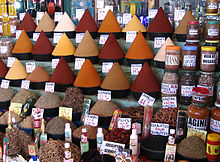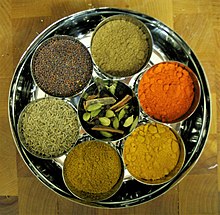**Historical Significance of Spices:**
– Spice trade developed in the Indian subcontinent and Middle East by 2000 BCE.
– Spices were used in ancient Egyptian, Chinese, and Indian cultures.
– Spices were associated with magic, medicine, religion, tradition, and preservation.
– Spices were among the most demanded products in Europe during the Middle Ages.
– European elite believed spices were connected to paradise.
– Portuguese explorers like Vasco da Gama sought spices in India.
– The discovery of the New World brought new spices to Europe.
– Spices were not primarily used as food preservatives historically.
**Culinary and Functional Aspects of Spices:**
– Spices are primarily used for food flavoring.
– Spices are used to perfume cosmetics and incense.
– Spices like turmeric, mustard seeds, chili powder, and cumin seeds are common.
– Spices contribute to cultural and culinary diversity.
– Spices are added early in preparation for flavors to infuse.
– Grinding spices increases oxidation, so grinding when needed is best.
– Spices are better at enhancing flavor than preserving food.
**Safety and Production of Spices:**
– 7% of spice shipments to the U.S. were contaminated with Salmonella.
– Most spices are cooked, minimizing the risk of contamination.
– Food irradiation is suggested to reduce Salmonella risk in spices.
– Countries vary in spice production.
– Spice production is monitored by international organizations.
– Spice production contributes to the economy.
– Imported spices may contain Salmonella.
**Health Benefits and Usage of Spices:**
– Spices have antimicrobial effects and antioxidant properties.
– Some spices are used in traditional medicine.
– Spices can add flavor without extra calories.
– Different types of coffee grinders can effectively grind spices.
– Light exposure contributes to spice oxidation.
– Nutmeg’s flavor degrades quickly after grinding.
– Some spices have antimicrobial properties but are less effective than salt.
**Resources and Further Reading on Spices:**
– Britannica, Merriam-Webster, and ISO standards cover spices.
– Various historical books and archaeological findings detail the significance of spices.
– Cookbooks dedicated to spices and herbs offer culinary insights.
– Wikibooks and Wikimedia Commons provide resources on cooking with spices.
– Scholarly resources delve into the economic and botanical aspects of spice plants.
In the culinary arts, a spice is any seed, fruit, root, bark, or other plant substance in a form primarily used for flavoring or coloring food. Spices are distinguished from herbs, which are the leaves, flowers, or stems of plants used for flavoring or as a garnish. Spices are sometimes used in medicine, religious rituals, cosmetics, or perfume production. They are usually classified into spices, spice seeds, and herbal categories.For example, vanilla is commonly used as an ingredient in fragrance manufacturing. Plant-based sweeteners such as sugar are not considered spices.
Spices may be used fresh and whole, after drying, grating, chopping, crushing, or grinding, or by extraction into a tincture. Such processing may happen before a spice is offered for sale, while preparing a dish in a kitchen, or after a dish has been presented for consumption (such as peppercorns ground at the table as a condiment). Some spices such as turmeric are seldom available either fresh or whole and so must be purchased in ground form. Small seeds such as fennel or mustard may be used either whole or in powdered form.
A whole dried spice has the longest shelf life, so it can be purchased and stored in larger amounts, making it cheaper on a per-serving basis. A fresh spice, such as ginger, is usually more flavorful than its dried form, but fresh spices are more expensive and have a much shorter shelf life.
There is not enough clinical evidence to indicate that consuming spices affects human health.
India contributes to 75% of global spice production.[citation needed] This is reflected culturally through its cuisine. Historically, the spice trade developed throughout the Indian subcontinent as well as in East Asia and the Middle East. Europe's demand for spices was among the economic and cultural factors that encouraged exploration in the early modern period.



